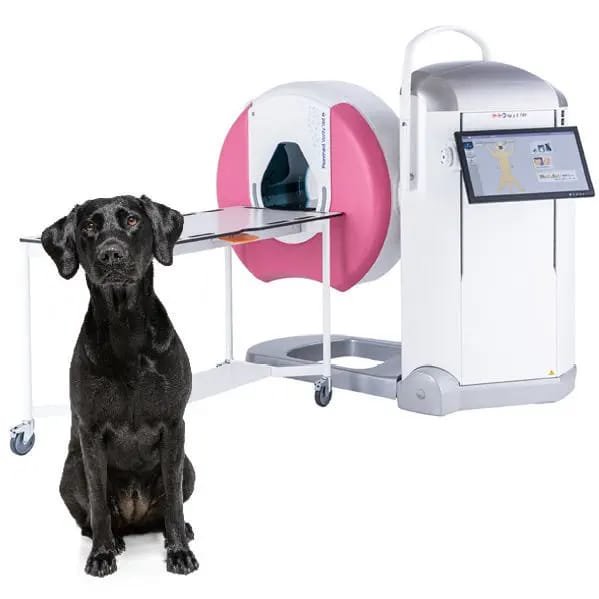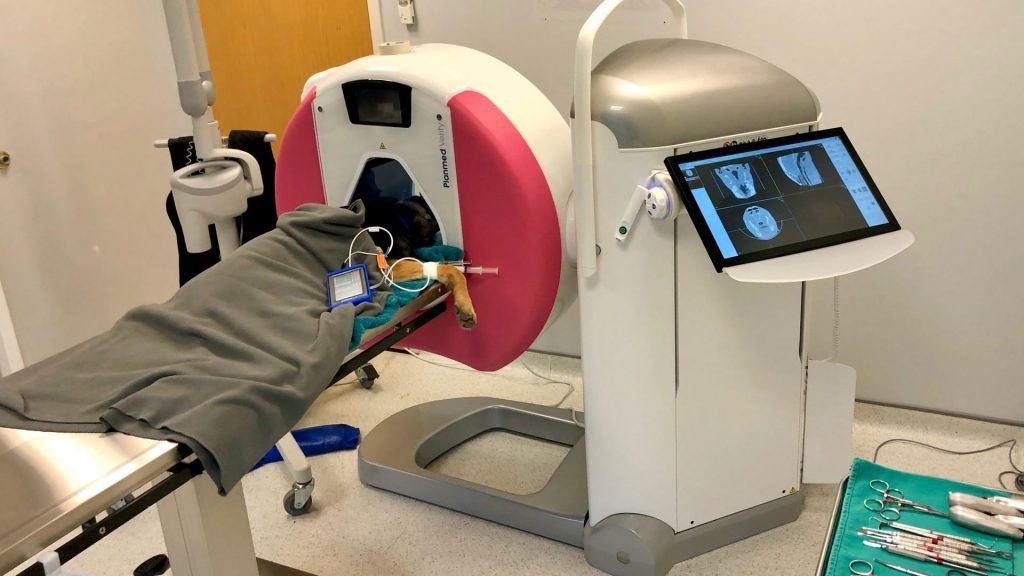
What Makes CBCT Scans a Game-Changer in Veterinary Care?
Introduction:
Introduction:
In recent years, veterinary care has undergone several advancements, especially in diagnostic technology. One of the most groundbreaking innovations is Cone Beam Computed Tomography (CBCT). While CT scans have been used for human medical imaging for years, CBCT has now found its way into veterinary practices, providing more precise and efficient diagnoses for pets. At Fredna Vet Diagnostic Centre, we are proud to offer this cutting-edge technology, making us the first diagnostic centre in Mumbai to do so. But what makes CBCT so special, and how is it transforming the way we care for animals?
What is CBCT?
Cone Beam Computed Tomography (CBCT) is a specialized form of CT scan that generates 3D images of an object’s internal structures using a cone-shaped X-ray beam. This technology has been widely used in dentistry and orthopedics but is now gaining popularity in veterinary medicine, particularly for conditions involving bones and teeth. CBCT produces highly detailed images with lower radiation exposure than traditional CT scans, making it an ideal choice for diagnosing pet health issues.
Why CBCT is a Game-Changer for Veterinary Care
1. High-Resolution 3D Imaging
One of the standout features of CBCT is its ability to create incredibly detailed 3D images. These images allow veterinarians to view the pet’s anatomy from multiple angles, enabling them to make more accurate diagnoses. This is especially beneficial for complex cases, such as dental issues or bone fractures, where precise imaging is critical.
2.Low Radiation Exposure
Unlike traditional CT scans, which often require higher doses of radiation, CBCT scans use a much lower dose. This is a crucial factor when it comes to animals, especially those that may need repeated scans over their lifetime. By reducing radiation exposure, CBCT provides a safer diagnostic option for pets, minimizing the risk of harm while still offering highly detailed images.
3.Faster and Less Stressful
CBCT scans are faster than traditional CT scans, which means that pets experience less stress during the process. This is particularly important for animals that may not tolerate long or invasive procedures. The shorter scan time reduces the overall anxiety for pets and allows veterinarians to get the results quickly.
4. Versatility in Diagnosis
CBCT is highly versatile and can be used for a range of diagnostic purposes. From detecting dental issues like periodontal disease and fractured teeth to identifying bone tumors, CBCT is an invaluable tool for veterinarians. It’s also used to assess joint diseases, ear canal conditions, and other complex cases where traditional imaging might not provide sufficient detail
5.Improved Treatment Planning
With the detailed 3D images provided by CBCT, veterinarians can plan surgeries or other treatments with much more precision. Whether it’s removing a tumor, repairing a fractured bone, or addressing a dental issue, the ability to see the pet’s internal structures in such high detail allows for more effective and less invasive procedures
How Fredna Vet Diagnostic Centre Utilizes CBCT for Optimal Care
At Fredna Vet Diagnostic Centre, we are proud to be pioneers in offering CBCT scans for pets in Mumbai. We understand the critical role that advanced diagnostics play in ensuring the health and well-being of your pet. Our CBCT machine is used to assess a variety of conditions, including:

Many pets suffer from dental problems that can go undiagnosed without the right tools. CBCT provides detailed images of the teeth, jawbones, and surrounding structures, helping us diagnose conditions like fractured teeth, abscesses, and periodontal disease.
2.Bone Fractures and Joint Problems
CBCT allows us to examine bones and joints in 3D, which is especially useful for diagnosing complex fractures, joint degeneration, or arthritis.
3.Tumors and Abnormal Growths
With CBCT, we can identify tumors or abnormal growths that may not be visible with traditional imaging methods. Early detection of these conditions is essential for effective treatment and a better prognosis.
4.Pre-Surgical Planning:
When surgery is required, having a 3D image of the affected area allows for better planning and fewer complications. CBCT scans enable us to understand the pet’s anatomy more accurately, ensuring that we take the most precise and effective surgical approach.
Leave a comment